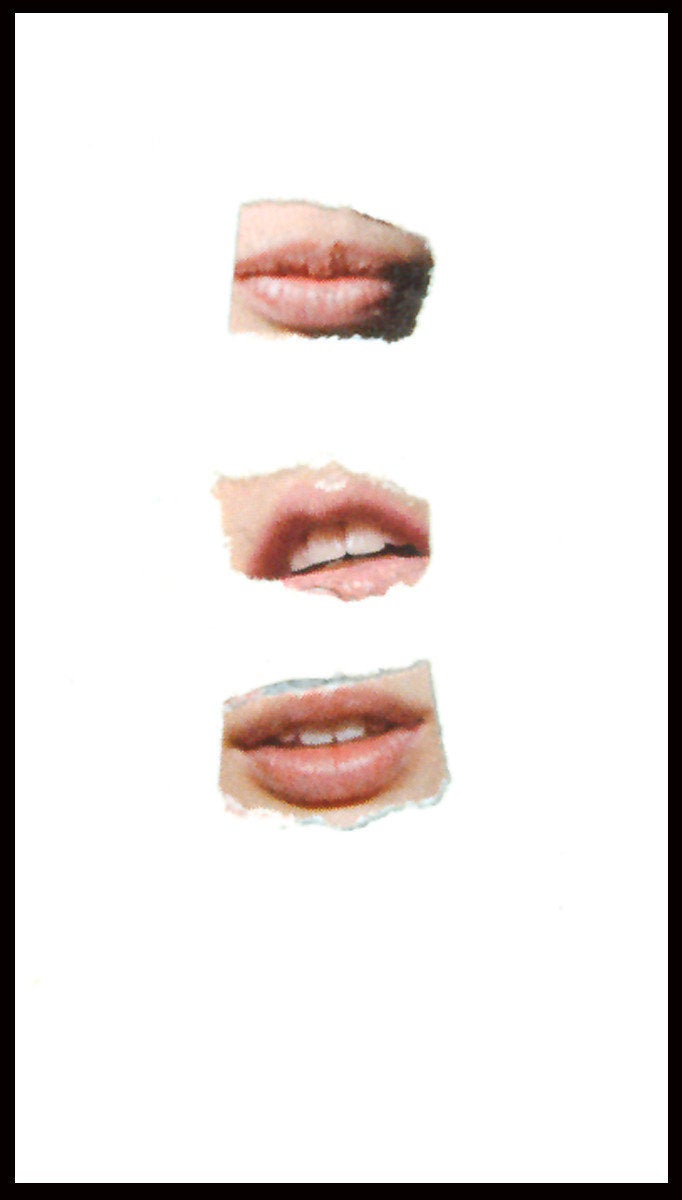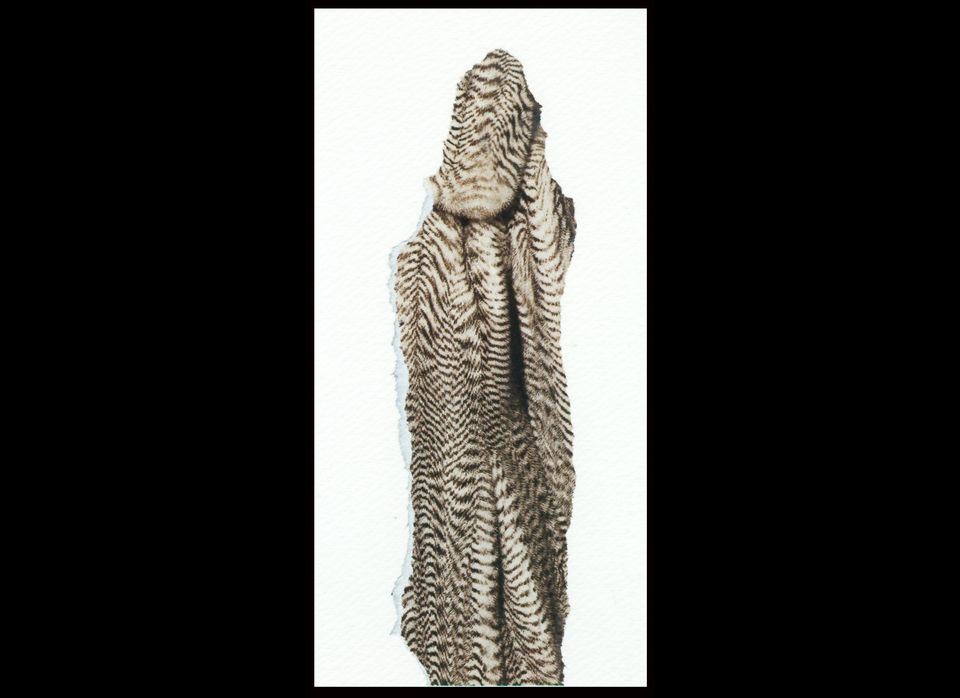
WASHINGTON -- What do you do with a catalogue full of beautiful things?
If you're Rex Weil, a D.C.-based artist, writer and educator, you shred them. Then you reassemble the pieces of paper into a collage depicting a coat or a treehouse. The collages are a critique of consumerism that, as art, are themselves luxury goods.
To that point: Weil says buyers should feel free to rip up his collages if that's what they want to do.
The Huffington Post caught up with Weil recently to talk about "Ripography," an exhibition of collages opening March 23 at the DC Arts Center. We also found out about Weil's own shopping habits.
The Huffington Post: What is Ripography?
Rex Weil: Ripography is my word for making new images by ripping up old ones. I wanted a word, in addition to "collage", to describe my process because, in many cases, my finished work consists of one or two rips isolated in white, negative space.That’s a little different than traditional collage, which is focused on joining the edges of paper pieces, often filling the entire picture plane.
And, the visceral act of ripping is important to the process -- I want the physicality of the rip to be preserved in the work; I want the viewer to feel it. Ripography, like, say, geography, also suggests the study of rips and there is an analytical aspect to what I do.
Ripology is my alternate title; I liked Ripography better because I am making images.
HuffPost: How do you choose the pieces of paper to include in your work? Are you interested in the content of the images -- in the objects of desire themselves? Do you select images of objects that you, personally, desire? Is it just their shape or color?
Weil: All of the above is usually a safe answer on multiple choice questions. Basically, I am a miner of image fragments. Having done this for a while, I look a page, find a sweet spot and rip away. The formal aspects -- shape, line, color, contrast -- are the key considerations, but I am not thinking consciously about that because it is an acquired skill, like returning a pass in soccer. I just go for it.
And, like the pass, sometimes it works and sometimes it doesn’t. The content of the image at that stage is by far secondary … the images, any and all, speak for themselves. I need a good rip that produces a new image. As for the exposure of my desires … definitely, but that’s for my shrink to figure out. That is, my desires aren’t an important aspect of the final product.
I hope that the work speaks in a more universal voice about desire: the dreams of perfect, smooth skin and supple leather, the dream of impossibly long limbs, the dream of a spotless kitchen, the dream of an organized garage, the dream of the plantation-like suburban home, the peculiar dream of a life as devoid of life as a gas chamber. (If it sounds like there’s some critic, poet, novelist John Berger in this, it’s true)
HuffPost: How do ideas of consumerism and luxury fit into your work? Does Ripography have a political message? What is the role of mythology in Ripography?
Weil: Mythology, as devised by Roland Barthes, refers to the intuitive analysis of myth -- not to the making of myth.
The myth here is that participation in commerce, fashion, comfort, and affluence is pure, free of taint, floating somewhere above the real world. The myth is that participation in commerce assures a sort of transcendent bliss and that it's at our command -- we only need to exercise our freedom to choose it.
Paradoxically, it's also a matter of fundamental taste -- some have taste; some don’t. Once I acquire the secret code of taste, my success is assured. History -- and particularly the history of the accumulation of capital -- is the buried narrative: comfort and affluence are always a function of the ruthless exploitation of labor and the imperialist extraction of resources.
I hope that doesn’t sound too strident. Maybe that’s why I make visual art instead of writing political tracts!
I would like to think that the literal ripping, tearing, shredding of myth as emblemized in ad copy, fashion photo, etc., has a de-naturalizing effect, performs a de-mythologizing operation. In the images, there are real people, working real jobs and real commodities made by real workers under real working conditions. Perhaps, in a small way, tearing at the fabric of myth suggests the real conditions behind the curtain.
HuffPost: Have you taken images of one luxury good and turned them into another luxury good: art?
Weil: Yes. And that’s an inevitable and, possibly, hilarious outcome. However, I can assure you that practically no one buys my work, so it would be a stretch to say I am producing luxury items in any significant way.
These are essentially very modest, simple works that I make in a way that pleases me visually and intellectually. The exhibition is the occasion to share what I have been working on. If visitors decide to simply go home and make their own, that’s fine.
In fact, they can rip up copies of my work.
HuffPost: What's the last thing you personally bought from a catalog? Do you shop much yourself?
Weil: Not a shopper. I wear essentially the same clothes every day. The worn out ones I wear to work; the newer ones for teaching, funerals, weddings and the like. My annual clothing budget is less than many monthly dry cleaning bills.
I do, however, have a slight CD problem: two or three a month. I am addicted to music and I’m always exploring. Last two CDs: (1) Karl Hector and the Malcouns, Sahara Swing; and (2) Matanzas Cuba, ca. 1957: Afro-Cuban Sacred Music from the Countryside (Folkways).
"Ripography" runs from March 23-April 29 at the DC Arts Center (2438 18th St. NW). The opening reception is on March 23 from 7-9 p.m.

